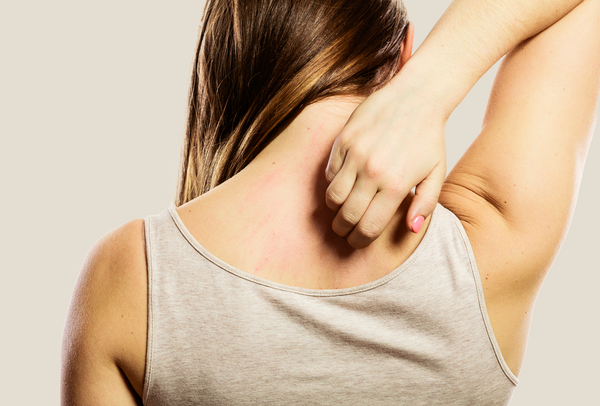In case you haven’t heard, October is Eczema Awareness Month—but this common skin condition (which affects more than 31 million Americans) is top of mind at SEEN all the time. As a Harvard-trained dermatologist, our founder Dr. Iris Rubin knows just about all there is to know about eczema, its symptoms (like itching, redness, and rashes), and the potential impact any product that comes in contact with your skin could have.
Whether in laundry detergent, skincare products, or shampoo and conditioner that cascade down your body in the shower, there are certain ingredients that may contribute to eczema flare-ups. SEEN finds skin-friendly alternatives to these ingredients (both the major offenders and the sneakier ones), and doesn’t stop there. Here, seven reasons why SEEN’s non-irritating skincare and sensitive skin-tested hair care have your eczema-prone skin’s back.
1. All SEEN products are sulfate-free
Sulfates are commonly used as cleansing agents in hair and skincare products, but this family of ingredients can strip the skin of its essential hydration as well as cause irritation and dryness. SEEN opts for gentle, naturally-derived cleansing ingredients that help maintain skin moisture and without disrupting the skin barrier—which is especially important for eczema-prone skin.
2. SEEN is formulated without many common allergens
Unlike irritants, allergens found in hair and skincare products can cause legitimate allergic reactions. Preservatives like methylchloroisothiazolinone and those that release formaldehyde are known allergens—but you won’t find them in SEEN.
3. SEEN avoids emerging allergens, too
There are common allergens that dermatologists and cosmetic chemists generally agree upon, and then there are emerging allergens. These are ingredients that are on a watch-list of sorts, or “trending” as dermatologists monitor allergic reactions to personal-care products. SEEN works closely with a contact dermatitis specialist when formulating our products to avoid including these emerging allergens. One example is glucosides, which are fatty acids derived from palm, coconut, and rapeseed oil. As their use in place of harsher surfactants has increased, so have reports of allergic contact dermatitis.[1]
4. All SEEN products are available fragrance-free
For some people, fragrance can cause an eczema flare—and in others, it can cause migraines or an unwanted reaction involving the eyes or nose. SEEN’s fragrance-free products offer a luxurious hair (and skin) care experience for people with fragrance allergies or sensitivity.
5. SEEN adds good-for-your-skin ingredients
Beyond eliminating potentially harmful ingredients and replacing them with safer alternatives (without making any sacrifices in terms of the hair and skincare results), SEEN goes the extra mile by formulating our products with skin-soothing ingredients like naturally derived bisabolol.
6. We perform RIPT testing on our hair-care products, too!
SEEN doesn’t just say that our products are non-irritating—we subject our final formulas to rigorous testing before introducing them to customers. Part of our comprehensive safety and allergy analysis includes RIPT testing, which stands for “repeat insult patch test.” Performed on real people (with real skin), this method allows us to be sure that our products carry minimal risk of skin irritation, sensitization, or allergic reactions.
7. All of SEEN’s fragrance-free products carry the National Eczema Association’s Seal of Approval™
You don’t have to take our word for it… The National Eczema Association (NEA) has granted their Seal of Approval to all of SEEN’s fragrance-free products, which means they are safe for sensitive and eczema-prone skin.
With SEEN, you don’t have to choose between gorgeous hair and healthy skin—you can have both! Whether you’re prone to eczema, clogged pores (that can lead to acne), a dry, flaky scalp—or even experiencing hair shedding—think of SEEN as your hair and skin’s bestie.
[1] https://www.jaad.org/article/S0190-9622(17)32539-2/fulltext




